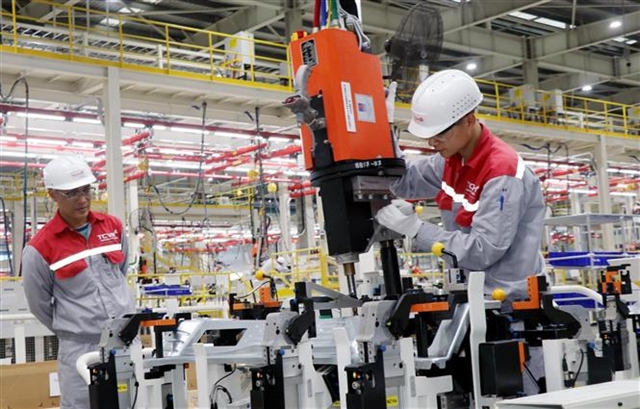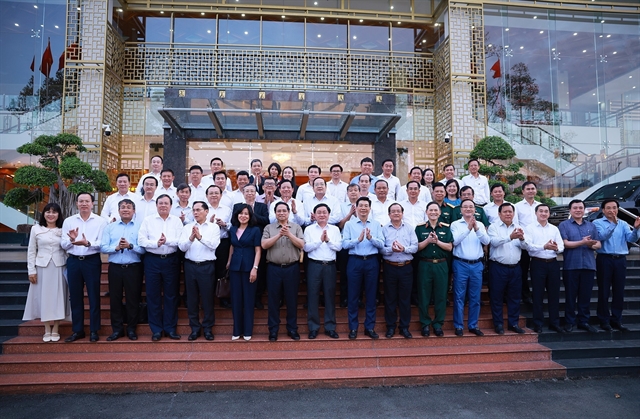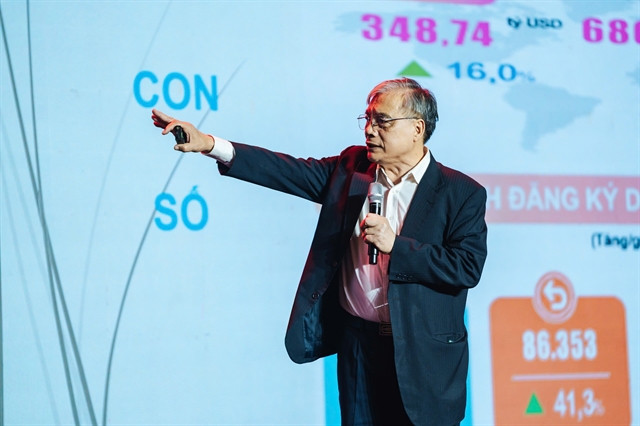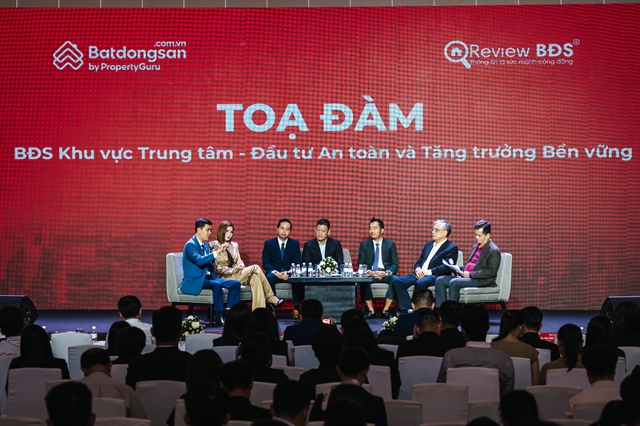 Economy
Economy

 |
| Prof. Dr Trần Đình Thiên, former director of the Vietnam Institute of Economics, speaks at the forum. — Photo courtesy of batdongsan |
HCM CITY — HCM City is reorganising its development space to adopt a multi-centred urban model, and the Thủ Thiêm peninsula, slated to host the International Financial Centre, is quickly emerging as the city’s next central business district (CBD), speakers told a forum in HCM City on November 18.
Speaking at the HCM City Real Estate Forum, Nguyễn Quốc Anh, deputy CEO of the property technology platform Batdongsan.com.vn, noted that Thủ Thiêm's strength lies in its strategic eastern gateway location, large, available land bank, and comprehensive planning, which align it perfectly with the concept of a modern CBD.
The IFC, expected to begin operations in 2025, is regarded as the key catalyst for establishing the city’s new financial hub.
Anh cited the example of Yeouido in Seoul, where the development of an IFC created strong spillover effects, attracting businesses and driving demand for high-quality accommodation, commercial services and retail. Yeouido eventually developed into a parallel growth pole alongside Seoul’s traditional CBD.
Thủ Thiêm is following a similar trajectory as major infrastructure projects advance, including Metro Line No. 1, new bridges linking former Districts 1 and 4 with Thủ Thiêm, and the planned Thủ Thiêm–Long Thành railway.
This emerging inter-regional transport network is expected to draw residents, professionals and businesses to move to the city's eastern part, laying the groundwork for a future “dual-centre” structure between former District 1 and Thủ Thiêm.
Central area apartments retain strong appeal
Despite the broader market's cautious sentiment, the central real estate market maintains strong appeal, particularly the apartment segment, Anh said.
Data from Batdongsan.com.vn shows that in the first 10 months of 2025, central apartments, while accounting for only 28 per cent of the supply, captured 45 per cent of the market interest.
The luxury segment (from VNĐ80 million per sq.m) saw remarkable growth. Interest in buying luxury units jumped 168 per cent year-on-year in Q3 2025.
 |
| Panelists at the HCM City Real Estate Forum. — Photo courtesy of batdongsan |
Several high-end projects have set new price benchmarks: around VNĐ413 million per sq.m in former District 1 and VNĐ314 million per sq.m in former District 2, with many others priced between VNĐ101–182 million per sq.m.
The Nam Rạch Chiếc urban area (former An Phú Ward), adjacent to Thủ Thiêm and connected via major transport corridors is attracting significant buying interest from investors and residents, with interest in property in An Phú District rising nearly 10 per cent quarter-on-quarter in Q3 2025.
Between 2015 and 2025, property prices in central HCM City increased sharply across all segments: land plots rose 384 per cent, apartments 197 per cent, private houses 168 per cent and shophouses 134 per cent.
Rapid increases in land and house prices have driven buyers towards high-rise apartments, which offer more accessible investment levels while still providing modern amenities and strong connectivity.
Anh affirmed the long-term potential of the area: "Over the long term, Thủ Thiêm is not just an extension of the existing CBD, it has the potential to become an economic and financial counterbalance centre within the next five to 10 years, once key infrastructure and financial projects are completed."
The formation of a polycentric network will change the way the city operates, leading to a continued increase in demand for high-quality housing, he said.
He believes real estate in both the old CBDs and Thủ Thiêm will retain its special position due to stable demand and direct influence from infrastructure connectivity, ensuring strong resilience in the medium to long term.
Speakers also emphasised essential elements for safe and sustainable investment.
Vũ Quốc Việt Nam of Đất Xanh Group highlighted three essentials: legal clarity, location and infrastructure dynamics, and a careful price–performance assessment.
Newly planned areas such as Thủ Thiêm offer long-term growth potential due to methodical planning from the outset, he noted.
Prof. Dr Trần Đình Thiên, former director of the Vietnam Institute of Economics, said the administrative merger of HCM City, Bình Dương and Bà Rịa–Vũng Tàu is shaping a multi-core growth model and the country’s largest metropolitan area. This creates significant opportunities for economic expansion and real estate development. — VNS




